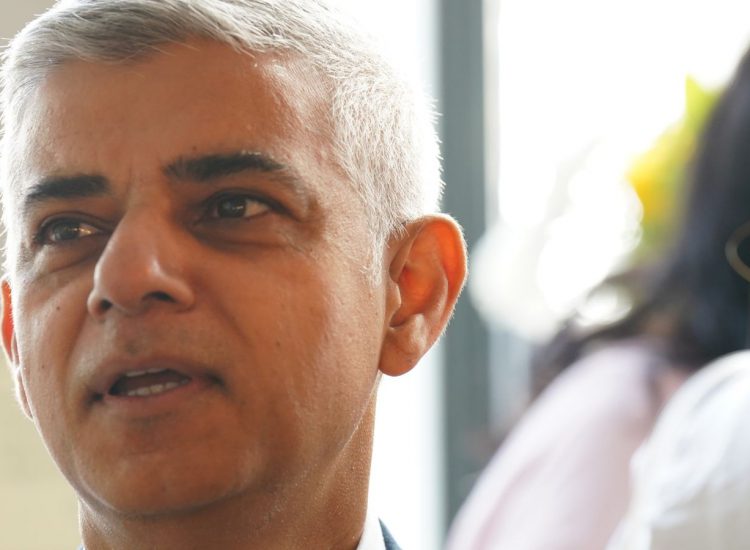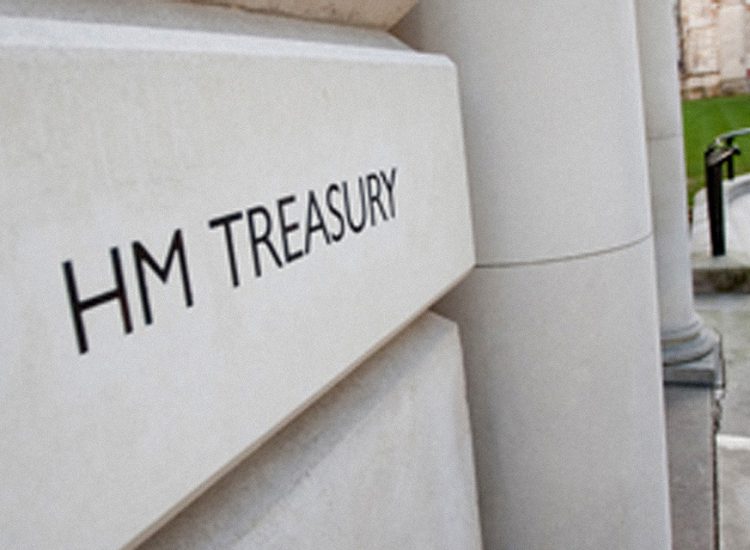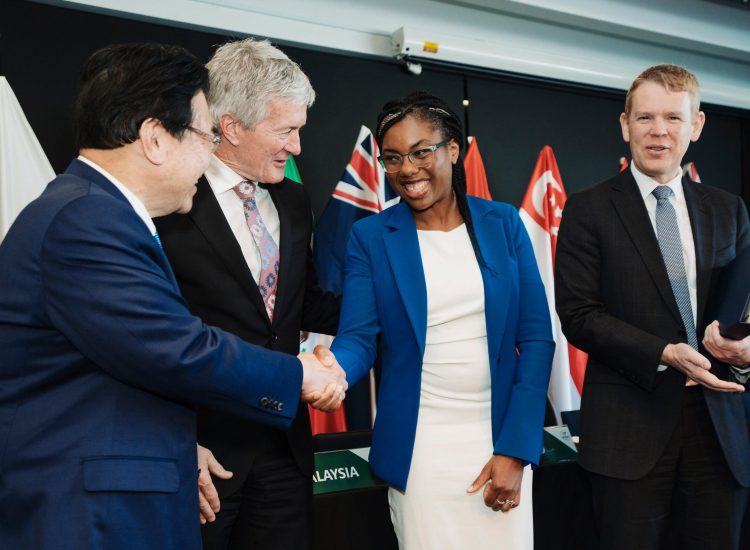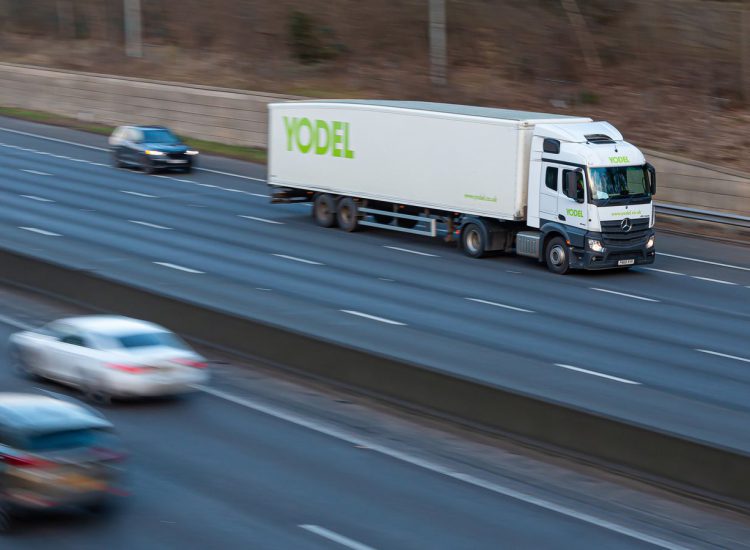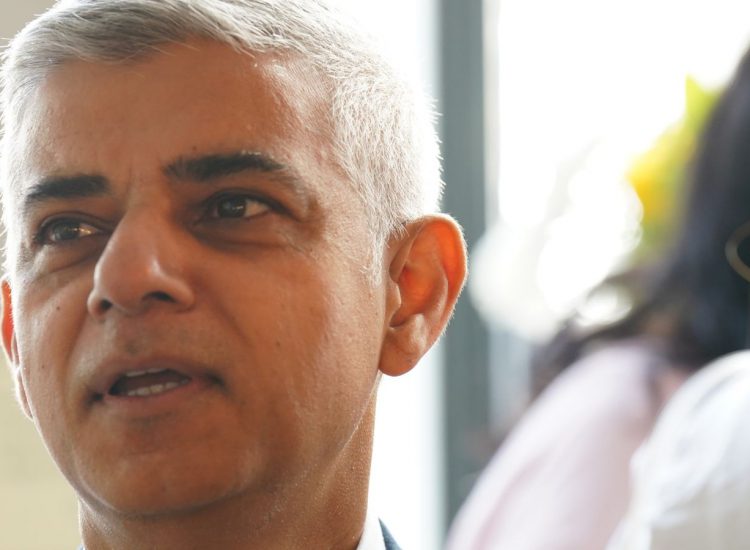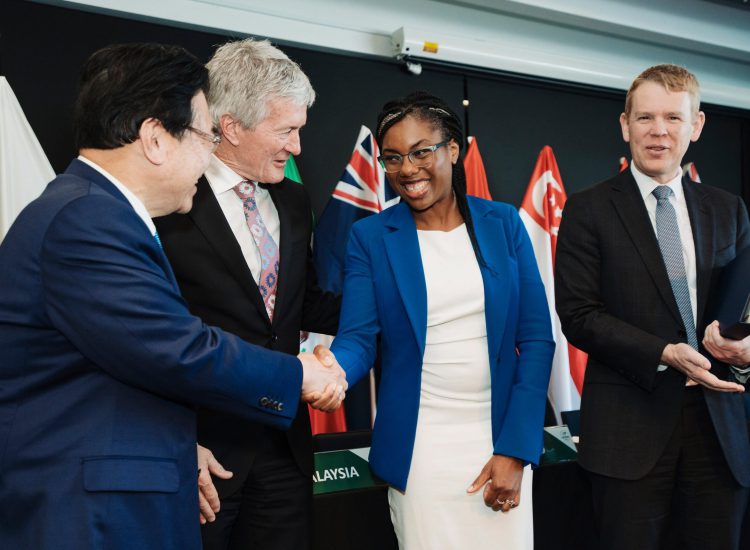Center East & Africa | Not all sizzling air Why Africa is poised to grow to be an enormous participant in power markets It has loads of pure fuel, sunshine and wind
Picture: ENI
E nergy markets are being rocked by an unprecedented double-whammy. Since Russia’s invasion of Ukraine final yr, Europe has lower power imports from Russia, the world’s second-largest producer of pure fuel and third-largest oil producer. Costs of each shot up earlier than falling again, however nervousness persists about power safety. In the meantime local weather change is prompting a deep however unsure shift away from fossil fuels equivalent to oil and, ultimately, fuel. Europe’s politicians and industrialists fear about retaining factories buzzing and houses heat within the face of those challenges.
Africa will be the reply to Europe’s speedy fuel drawback and its longer-term carbon one. It has 13% of worldwide fuel reserves, solely a contact lower than the Center East, and seven% of the world’s oil in addition to huge green-energy potential. African power might “grow to be actually central for the longer term for Europe—and never only for Europe,” says Claudio Descalzi, the CEO of Eni, the Italian oil main. “They’ve quite a bit—quite a bit—of fuel, they’ve solar, wind…[that is] good for our power transition.”
This discuss will not be sizzling air. Worldwide power companies together with Eni are dusting off or drawing up new plans to provide liquefied pure fuel ( lng ) throughout the continent. Amongst these are strikes to restart two enormous lng initiatives that had been shelved, together with a $30bn-40bn one in Tanzania and one other value $20bn in Mozambique.
The exercise marks a pointy change within the prevailing temper over the previous few many years, when Africa had dwindled in significance to power markets. A continent that after offered a fifth of the world’s internationally traded lng now supplies half that share. Its shares of worldwide oil and coal manufacturing have additionally fallen as buyers in oil, specifically, have been delay by deteriorating safety in Nigeria, often the continent’s largest producer.
Greater costs, elevated European demand because the EU diversifies away from Russia and a change from coal to fuel, a cleaner gasoline, are driving the change. And the swing is swift. Mozambique shipped its first lng in November and will quickly export vastly extra. TotalEnergies, a French oil main, might quickly restart constructing an enormous lng undertaking in Mozambique that it halted in 2021 due to a jihadist insurgency. Patrick Pouyanné, the CEO of TotalEnergies, tells The Economist that the undertaking is sort of again on observe and so ought to be producing fuel by 2028. Improved safety might additionally increase the prospects of a fair bigger lng undertaking close by that’s proposed by Exxon Mobil, the most important Western oil main, and China Nationwide Petroleum Company. Throughout the close by border in Tanzania, Shell and Equinor, two European power firms, are resuscitating their proposed $30bn-40bn lng undertaking.
Elsewhere, an lng undertaking in Senegal and Mauritania is predicted to start out producing this yr and the prospects of its second section look promising. In Nigeria, Africa’s largest lng exporter, manufacturing capability ought to rise by about 35% by 2026.
In all, new fuel initiatives in sub-Saharan Africa might add some 90 billion cubic metres (bcm) in annual lng capability by 2030, reckons Akos Losz of Columbia College. To make certain, solely a few fifth of this capability is already beneath development or not on maintain for safety causes and a few initiatives could but fail. But power companies appear decided to press forward. New initiatives in north Africa, the place Eni simply signed an $8bn deal to develop two Libyan fields, might provide a further 30 bcm of fuel by 2030, reckons Mr Losz. Rystad Power, a analysis agency, sees related potential (see chart). If all go forward, the 120 bcm added to Africa’s present output would elevate its share of worldwide fuel manufacturing to eight.5%, from 6% at the moment, even making an allowance for large will increase anticipated in Qatar. The extra manufacturing anticipated in Africa alone would greater than offset the 70 bcm fall in Russian fuel exports to the EU between 2021 and 2022.
Over the longer run Africa appears set to play a fair larger position in power markets. The Fuel Exporting Nations Discussion board, a world membership of gas-exporting nations, expects Africa so as to add extra fuel capability than every other area bar the Center East. It reckons Africa shall be producing virtually 600 bcm a yr by 2050, up from 249 bcm now.
Counting rigs, not rigging counts
Different indicators appear to assist these bullish forecasts. The variety of rigs working in Africa, a number one indicator of exploration and manufacturing, is at is its highest since 2019, based on Rystad. Spending on African exploration and growth is predicted to achieve $46bn this yr, the best since 2017. In the meantime Africa’s share of worldwide capital expenditure on fuel has greater than doubled since 2014, based on Wooden Mackenzie, one other power analysis agency.
Oil can also be attracting funding. TotalEnergies, the world’s third largest internationaloil and fuel agency, will spend half of its international exploration finances this yr in Namibia, the place it seems there could also be as a lot as 11bn barrels of oil and probably fuel too. That might make Namibia an enormous producer. “Now we have little question that it’s going to occur,” says Namibia’s power minister, Tom Alweendo. Even modest hydrocarbon exports can have a big effect on poor nations. Take Niger, the place a Chinese language-built export pipeline is nearing completion. “Subsequent yr alone it’s going to convey finances assets value 1 / 4 of our present finances,” says Mohamed Bazoum, the president of Niger. “The next years will probably be even larger.”
Africa additionally has huge potential to be an enormous producer of inexperienced power. Though it has sunny, spacious deserts, windy coasts and plains and gushing rivers, it has been a laggard and has simply 1% of the world’s put in photo voltaic and wind capability and solely 4% of hydropower. This, too, is altering, although maybe not shortly sufficient: put in photo voltaic capability in Africa has virtually quadrupled since 2016.
Africa has punched beneath its weight primarily as a result of it has been laborious to export inexperienced power. Investments have been made primarily for native consumption of electrical energy (which is lower than 3% of the world’s complete) and even privately owned energy producers usually struggled to generate income as a result of they equipped small markets by way of inefficient state-owned utilities.
Now new applied sciences might permit renewable-energy producers to sidestep issues in home markets by exporting power. With assured revenues from exports, green-energy companies can extra simply safe the funding wanted to construct huge and environment friendly vegetation. One spillover is that they need to then additionally have the ability to present energy to native economies.
The primary of those export alternatives is thru producing so-called “inexperienced hydrogen”, which is made by splitting water into oxygen and hydrogen utilizing renewable electrical energy. Wealthy nations see inexperienced hydrogen as the most effective hope to maintain their energy-intensive business operating whereas slashing carbon emissions. America not too long ago launched the most important subsidies on this planet for low-carbon hydrogen (which incorporates that produced with fuel and carbon-capture). The EU ’s new power programme, designed to make the bloc unbiased of Russian fossil fuels, has set a goal for Europe to provide 10m tonnes of inexperienced hydrogen a yr and to import 10m tonnes extra by 2030. The iea , an intergovernmental think-tank, reckons the world might want to produce 90m tonnes of low-carbon hydrogen a yr by 2030 and 450m tonnes a yr by 2050 whether it is to achieve its aim of web zero emissions by mid-century.
Africa’s sturdy photo voltaic and wind potential make it a beautiful place to provide inexperienced hydrogen. A latest examine by the European Funding Financial institution ( EIB ), the eu ’s growth financial institution, argues that Africa might produce 50m tonnes of the stuff a yr by 2035 from three subregions: Egypt; Mauritania and Morocco; and Namibia and South Africa. About half of this might be for export. “Namibia has the potential to grow to be one of many essential renewable power hubs on the African continent and worldwide,” gushed Ursula von der Leyen, the president of the European Fee, in Could. The financial institution reckons Mauritania and Morocco might be one of many world’s best producers, with prices together with transport to Gibraltar of about $1.6 per kg by 2035.
Related articles:
- https://bargame.xyz/for-markets-boe-communication-is-backside-of-the-category/
- https://bargame.xyz/cathie-wooden-offered-off-21-million-of-tesla-inventory-hours-earlier-than-earnings-dip-now-shes-scooping-up-this-magnificent-progress-inventory/
- https://bargame.xyz/hello-world/
- https://bargame.xyz/nigel-farage-accuses-natwest-of-giving-his-information-to-bbc-and-complains-to-info-commissioner-2/
- https://bargame.xyz/former-telegraph-house-owners-take-supply-of-bids-for-parcel-group-yodel-3/
Fuel within the tank
Massive hydrogen initiatives are beginning to collect velocity in Africa. One of many largest is in Mauritania, the place final yr the federal government and CWP World, a green-energy firm, signed an early settlement for a wind and photo voltaic undertaking to provide 1.7m tonnes of inexperienced hydrogen a yr. One other megaproject in Mauritania by Chariot, a British agency, and a subsidiary of TotalEnergies, goals to provide 1.2m tonnes a yr. “That is a unprecedented alternative,” says Abdessalam Ould Mohamed Saleh, Mauritania’s power minister.
The joy is comparable in Namibia the place the federal government not too long ago completed negotiations with Hyphen Hydrogen Power, a renewable-power agency, for the subsequent section of a $10bn undertaking that goals to provide 2m tonnes a yr of inexperienced ammonia (a product made out of inexperienced hydrogen that’s transported extra simply) by 2030. It’s backed by the EU . “They want the molecules. We’d like the roles,” quips James Mnyupe, an adviser to Namibia’s president.
Inexperienced hydrogen will not be the one chance for exporting renewable power. Xlinks, a British agency, is planning a wind and photo voltaic plant in Morocco that may ship electrical energy on to Britain alongside 3,800 kilometres of deep-sea cables by 2030. The undertaking might present 8% of Britain’s electrical energy at a a lot decrease price than alternate options equivalent to a long-delayed nuclear energy plant, says Xlinks. Although its $18bn price is a substantial hurdle, the undertaking has attracted preliminary funding from Abu Dhabi’s nationwide power firm.
For Africa to grasp its power potential it might want to dodge a collection of pitfalls. The primary hazard is sloth. On pure fuel, opponents equivalent to Qatar and America are transferring shortly to develop their manufacturing. If Africa is tardy its window of alternative to provide Europe could shut, notably as demand shifts to greener sources of power. The IEA reckons that by 2030 the eu could use 20% much less fuel than it did in 2021 primarily based on present insurance policies.
Africa’s file on velocity is worrying. Over the previous twenty years new fuel initiatives in sub-Saharan Africa have taken virtually 5 years longer than anticipated to go from discovery to manufacturing. Then again, African oil and fuel producers are fairly cost-competitive, that means they won’t be the primary to wrestle if falling demand hits costs. At a fuel value of simply $3 per 1,000 cubic toes, two-thirds of African fuel continues to be worthwhile. This contains a lot of the fuel present in Algeria, Mauritania and Tanzania (see chart). Even in oil, which is dominated by low-cost Saudi manufacturing, Africa continues to be largely within the sport at costs above $30 a barrel.
Crude oil Pure fuel Brent crude value, $45 per barrel Slide to regulate <10 50 100 >150 $45 At $45 per barrel, 72% of Africa’s crude oil reserves are viable, in comparison with 74% worldwide Share of crude oil reserves which might be economically viable 15 largest African producers Viable 50 100% Not viable 50 100% Nigeria Libya Algeria Angola Complete reserves → Supply: Rystad Power
In the meantime demand for fuel is predicted to develop in Africa itself because the continent strikes to provide electrical energy for the roughly 600m Africans who don’t presently have it. A lot of this new provide will most likely come from renewable sources, however fuel may be an essential a part of a steady electrical energy combine and likewise fireplace the furnaces of heavy business.
Companies and governments are additionally working to make sure that Africa’s pure fuel is extracted in probably the most climate-friendly methods potential. Eni claims that its growth and operation of the Baleine oil and gasfield in Ivory Coast would be the first in Africa to have web zero emissions (although that doesn’t depend the emissions from whoever buys and burns the oil and fuel).
The second main pitfall threatening Africa’s power growth is home safety. Jihadists have already delayed the development of Mozambique’s mega fuel initiatives by a number of years and prompted the nation’s neighbours to ship in troops to revive order. In the meantime Nigeria partly missed out on the windfall of excessive fuel costs final yr as a scarcity of safety led to it delivery much less LNG in 2022 than the yr earlier than.
The third hazard is disputes over how the rents from power manufacturing are divided. The {dollars} huge oil and fuel initiatives earn might be grabbed by well-connected politicians and businesspeople, quite than benefiting the inhabitants as a complete.
Alas governments within the area don’t at all times have a very good file of productively investing revenues from assets into infrastructure, faculties and clinics. In Equatorial Guinea, for instance, oil has propped up the world’s longest-ruling dictator. His playboy son, who hopes to take over, is understood for splashing money on mansions and quick vehicles (and squandering the remaining). In the meantime the folks of Equatorial Guinea undergo. The nation ranks 145 out of 189 on the UN ’s Human Improvement Index, a measure of revenue, well being and training.
Shakedowns of oil and fuel firms and nationalisations of their belongings are nonetheless worryingly widespread in Africa. In Ghana, often certainly one of Africa’s higher funding locations, Tullow Oil goes to worldwide arbitration after being given a retrospective tax invoice of $387m because the nation scrambles for funds amid a public debt disaster. Traders contemplating pumping within the billions of {dollars} wanted to provide lng or inexperienced hydrogen won’t achieve this in the event that they concern their belongings won’t be secure, or if the principles shall be arbitrarily modified.
That is particularly the case for inexperienced hydrogen initiatives, which might want to entice formidable quantities of capital. Namibia’s proposed undertaking will price about $10bn; not a lot lower than its present GDP of $12bn. The estimated funding wanted for the eib’s pan-African imaginative and prescient to provide 50m tonnes of inexperienced hydrogen per yr by 2035, together with all the pieces from photo voltaic installations to export pipelines, is $1.4trn. The largest drawback is whether or not firms and governments within the wealthy world, who need inexperienced hydrogen, will make investments. “Will phrases grow to be deeds that meet wants?” asks NJ Ayuk of the African Power Chamber, an business physique.
After many years of declining relevance to international power markets, Africa has a short second of huge alternative. To grab it, Africa’s governments should study from the errors made in earlier commodity booms, when buyers have been frightened off and revenues have been squandered. Adonis Pouroulis, the CEO of Chariot, believes that this time the continent won’t waste the chance. “This century,” he says, “is Africa’s century.” ■
Correction (July nineteenth 2023): An earlier model of this text incorrectly calculated the profitability of African fuel.That has been mounted.
Sources: The Economist
